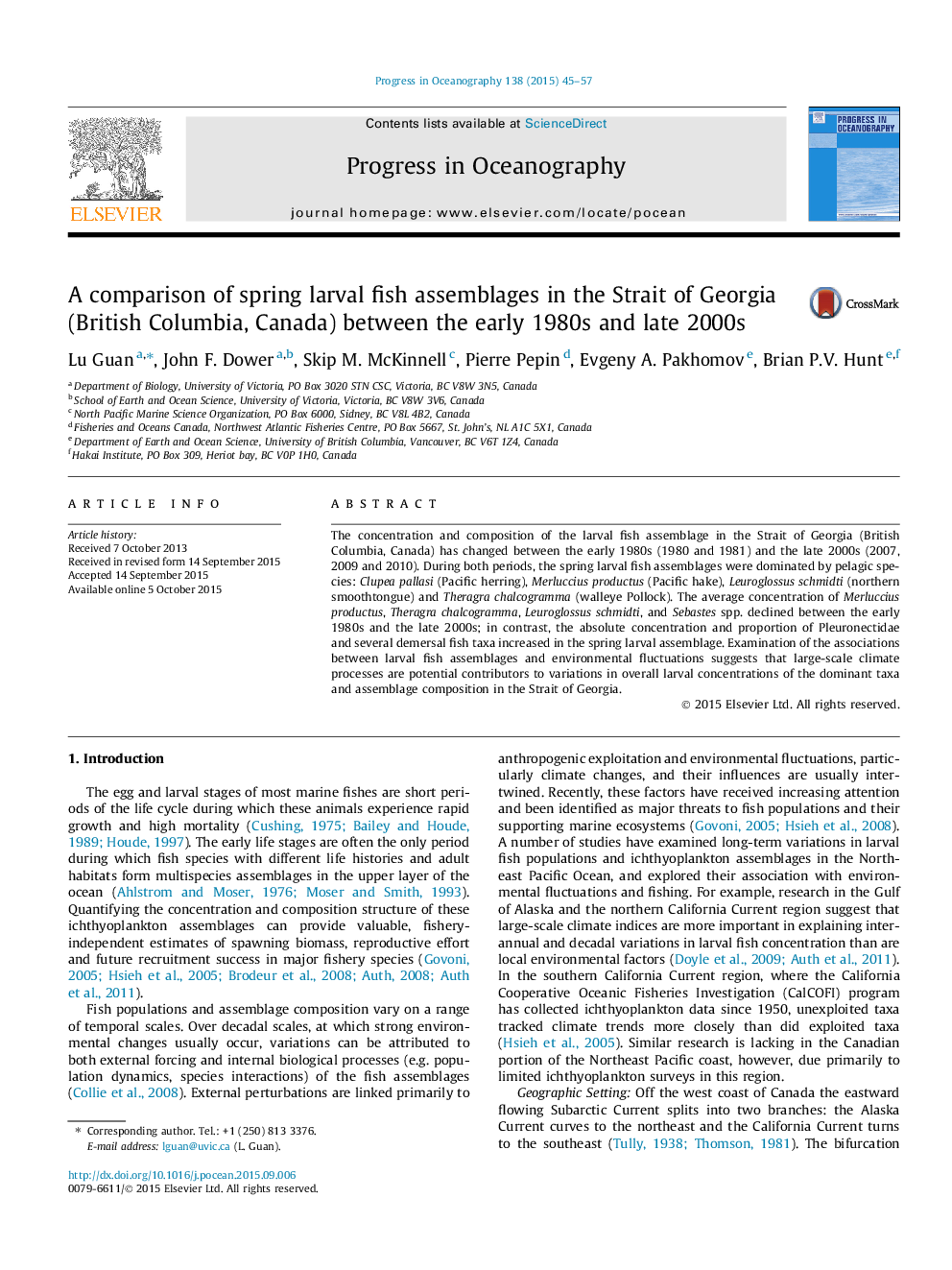| Article ID | Journal | Published Year | Pages | File Type |
|---|---|---|---|---|
| 6388458 | Progress in Oceanography | 2015 | 13 Pages |
Abstract
The concentration and composition of the larval fish assemblage in the Strait of Georgia (British Columbia, Canada) has changed between the early 1980s (1980 and 1981) and the late 2000s (2007, 2009 and 2010). During both periods, the spring larval fish assemblages were dominated by pelagic species: Clupea pallasi (Pacific herring), Merluccius productus (Pacific hake), Leuroglossus schmidti (northern smoothtongue) and Theragra chalcogramma (walleye Pollock). The average concentration of Merluccius productus, Theragra chalcogramma, Leuroglossus schmidti, and Sebastes spp. declined between the early 1980s and the late 2000s; in contrast, the absolute concentration and proportion of Pleuronectidae and several demersal fish taxa increased in the spring larval assemblage. Examination of the associations between larval fish assemblages and environmental fluctuations suggests that large-scale climate processes are potential contributors to variations in overall larval concentrations of the dominant taxa and assemblage composition in the Strait of Georgia.
Related Topics
Physical Sciences and Engineering
Earth and Planetary Sciences
Geology
Authors
Lu Guan, John F. Dower, Skip M. McKinnell, Pierre Pepin, Evgeny A. Pakhomov, Brian P.V. Hunt,
